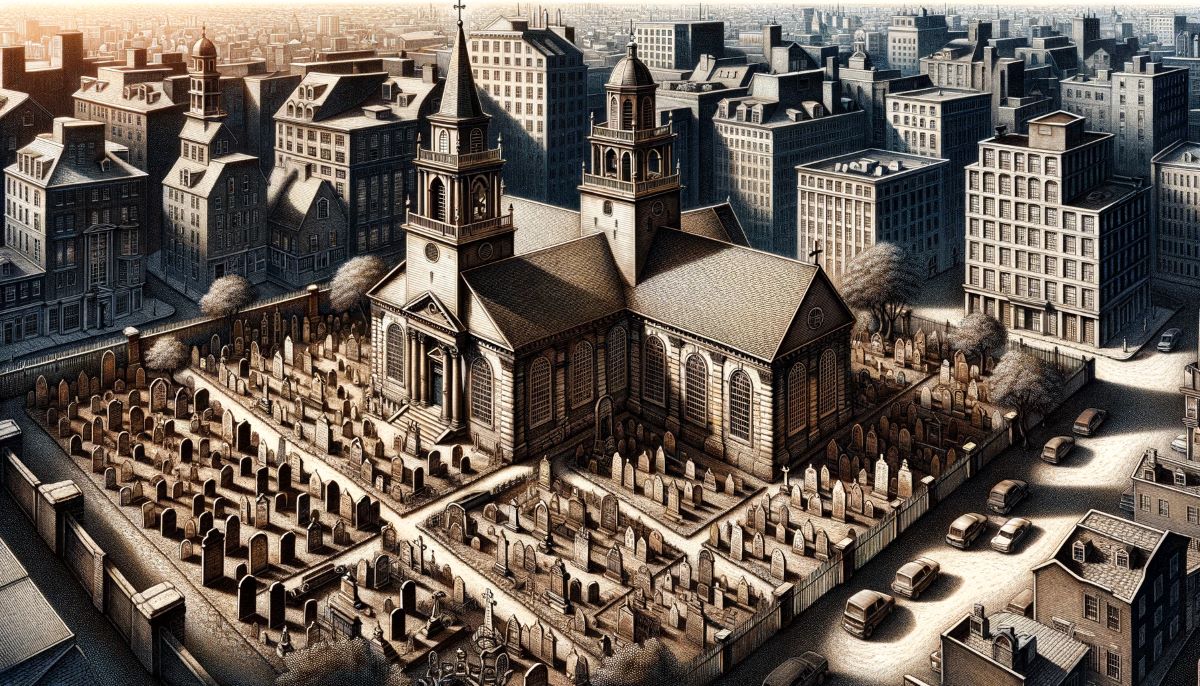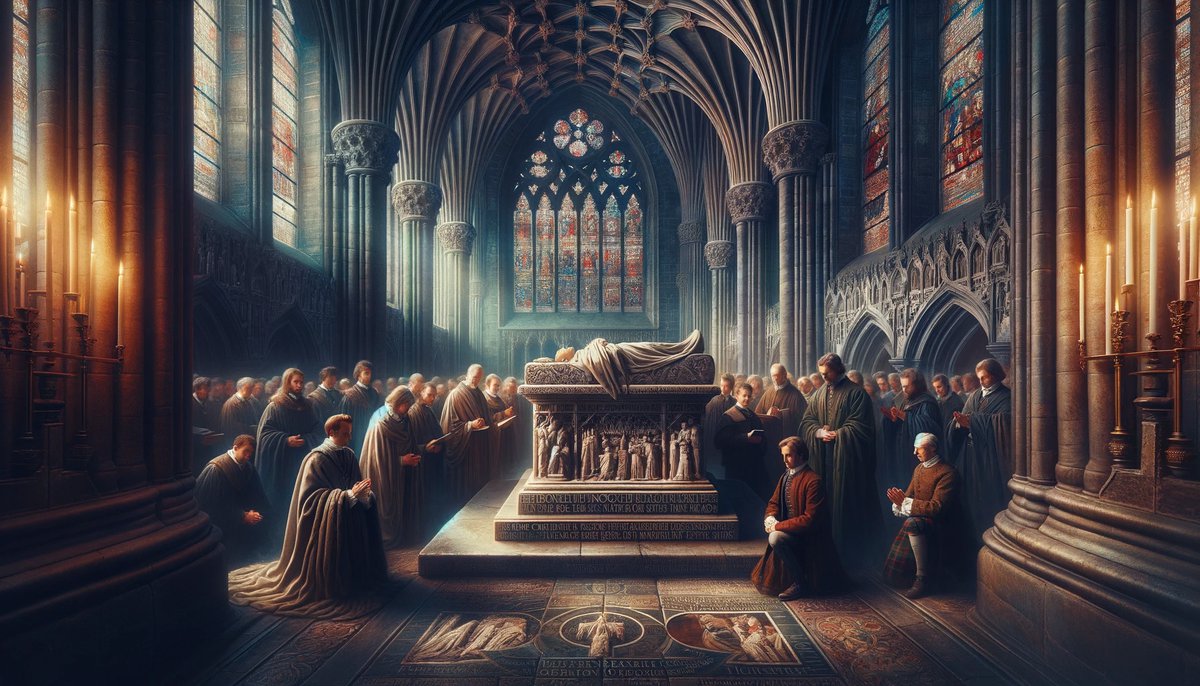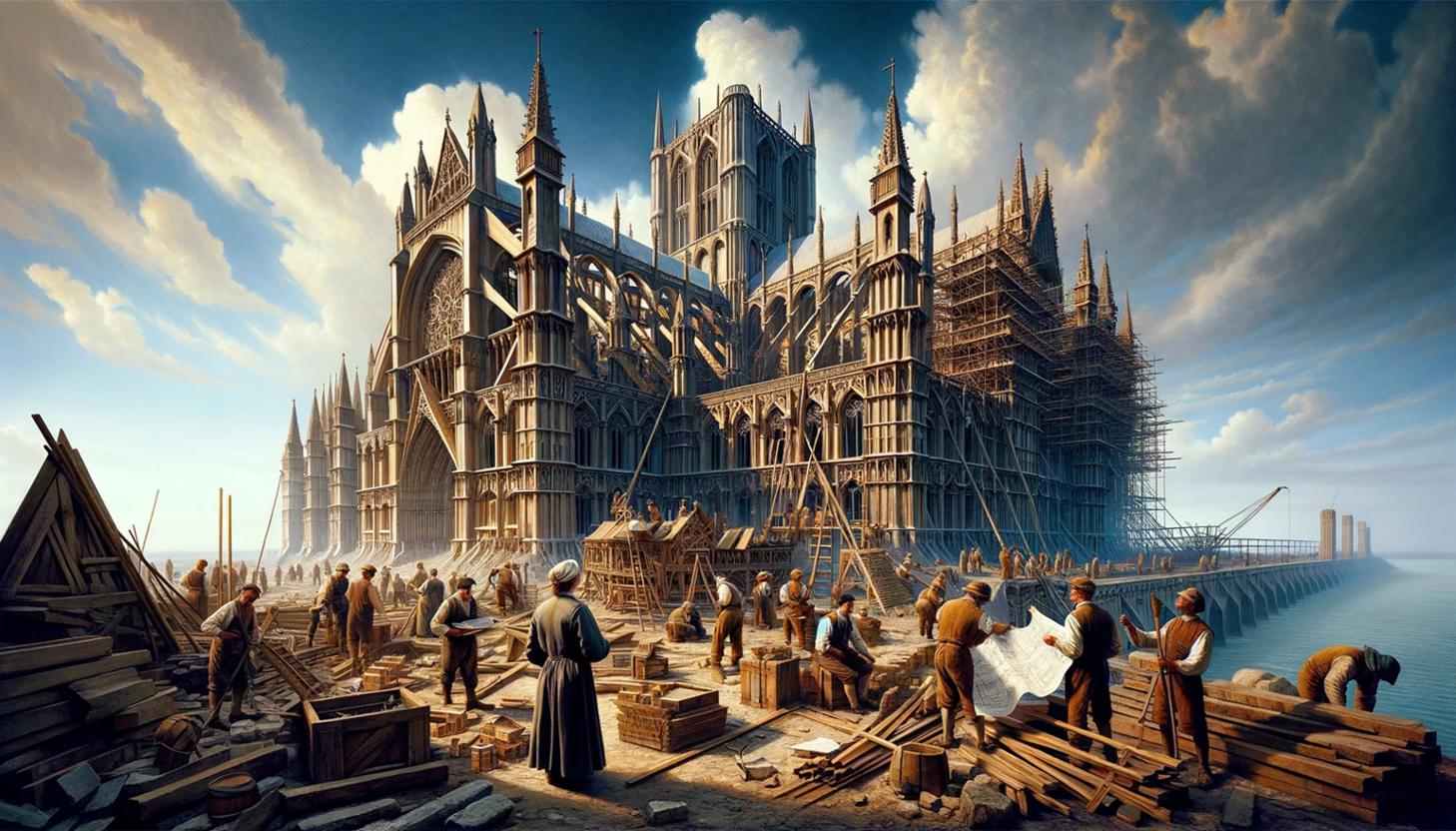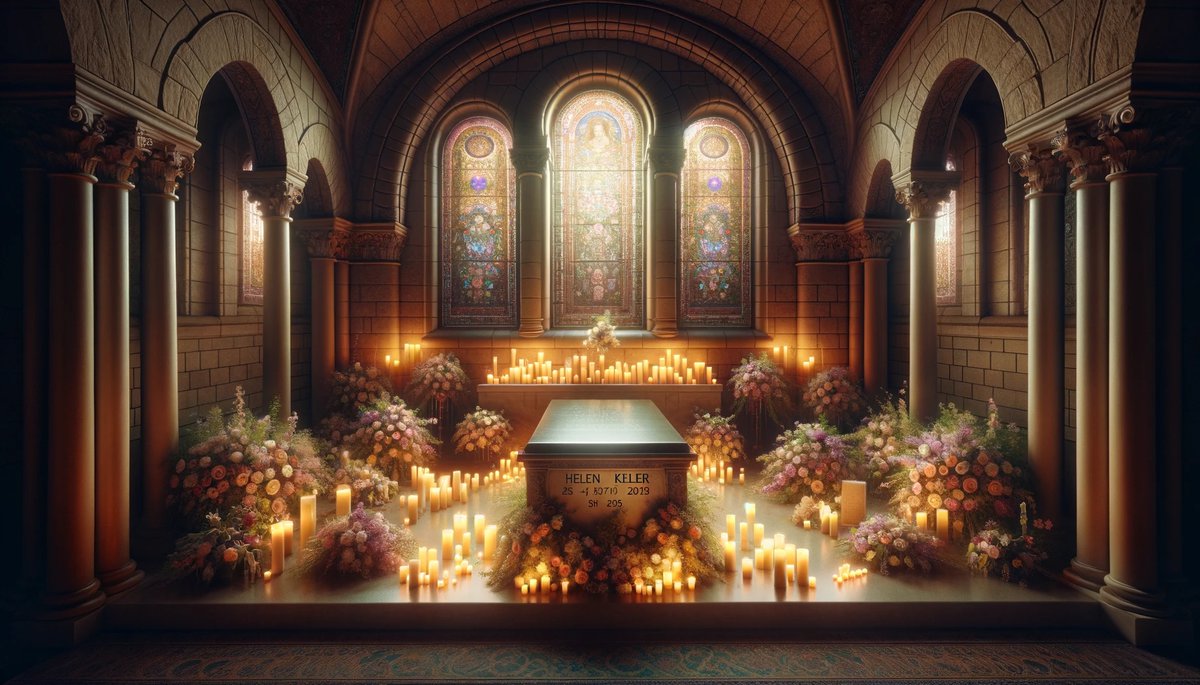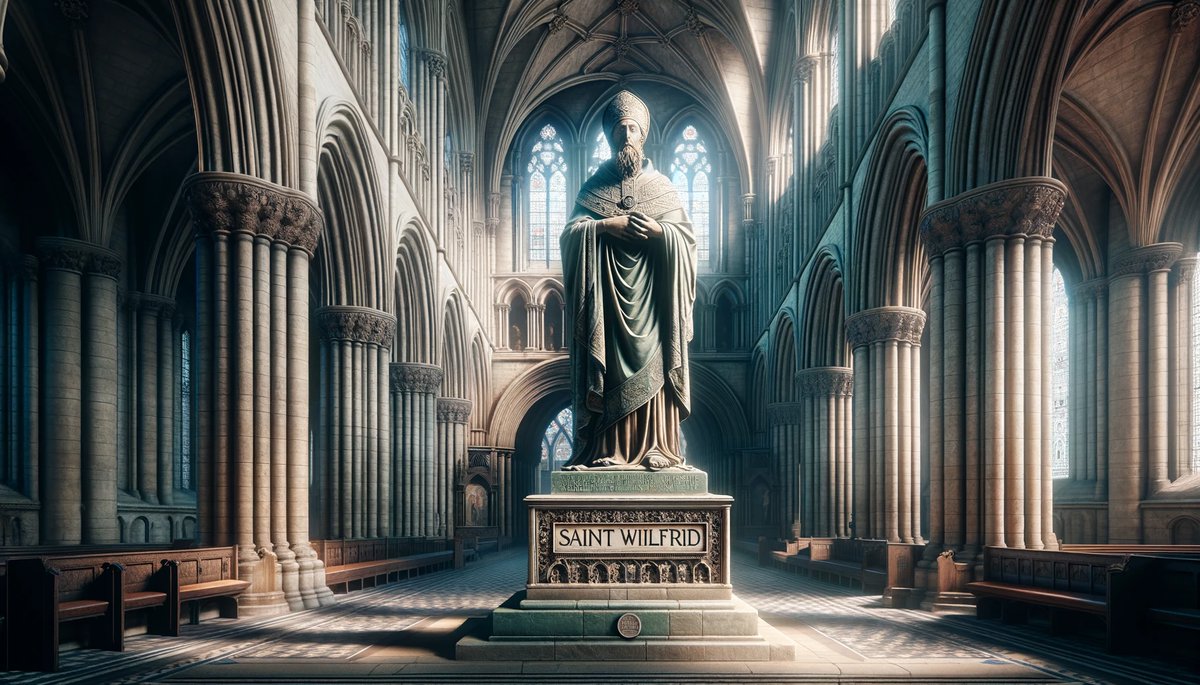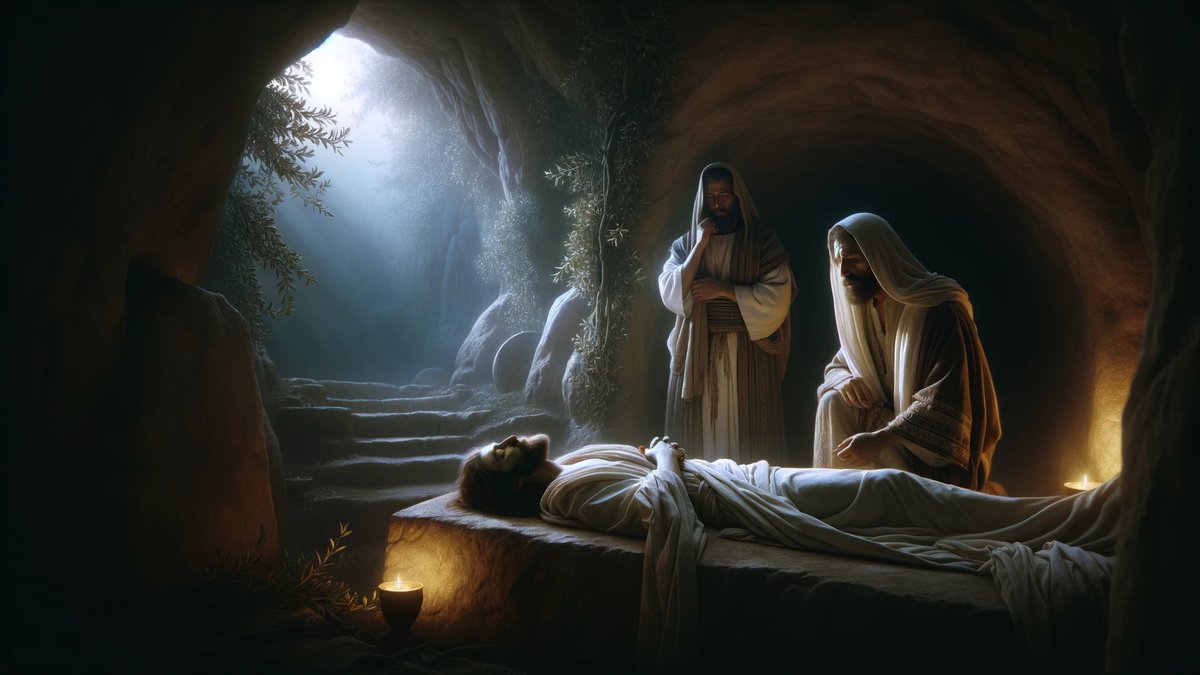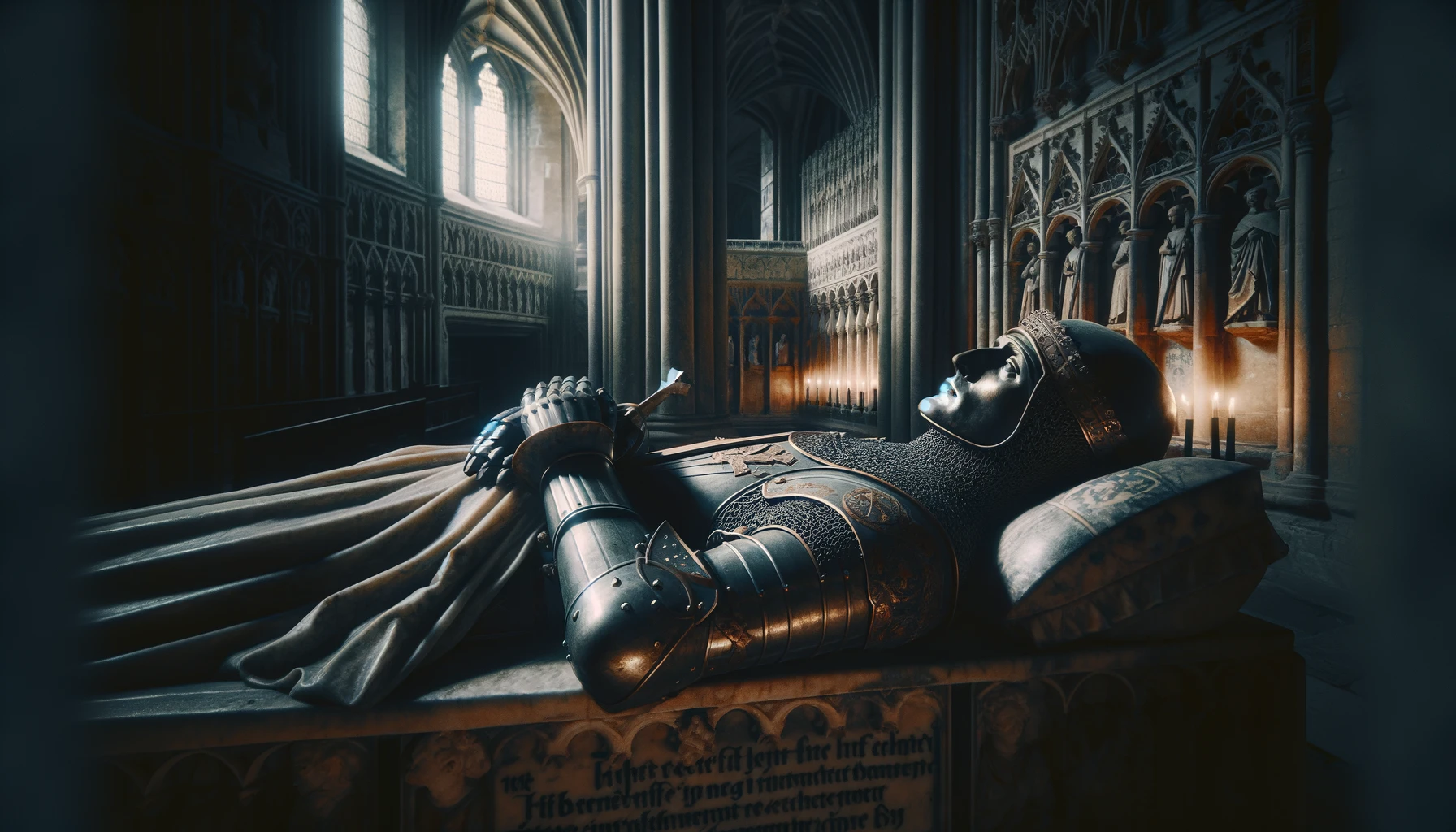Home>Arts and Culture>Who Is Buried At St George’s Chapel
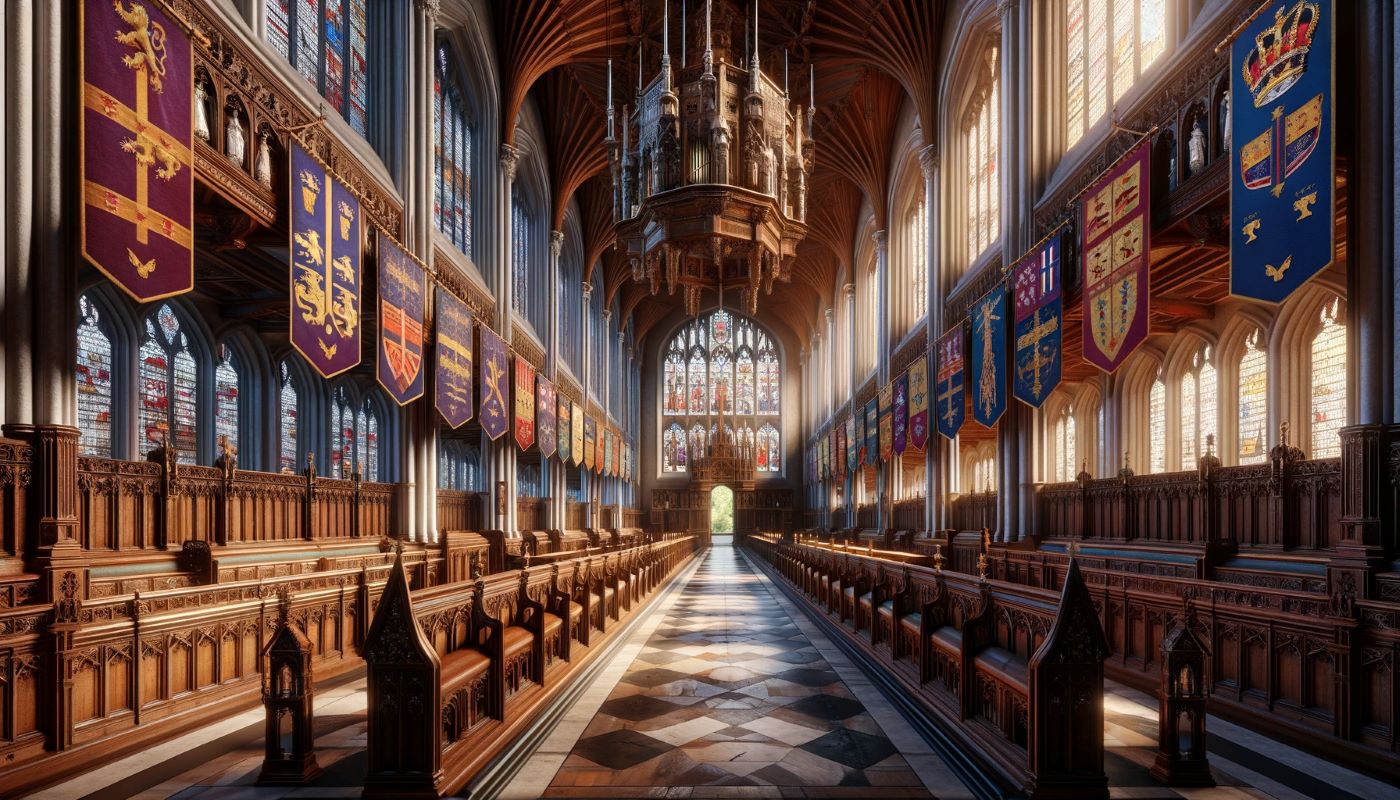

Arts and Culture
Who Is Buried At St George’s Chapel
Published: March 4, 2024
Peter Smith, Editorial Director at Christian.net, combines deep insights into faith, politics, and culture to lead content creation that resonates widely. Awarded for his contributions to religious discourse, he previously headed a major organization for religious communicators, enhancing dialogue on faith's societal impacts.
Discover the history and significance of St George's Chapel and learn about the notable figures buried there. Explore the arts and culture of this iconic landmark.
(Many of the links in this article redirect to a specific reviewed product. Your purchase of these products through affiliate links helps to generate commission for Christian.net, at no extra cost. Learn more)
Table of Contents
The History of St George's Chapel
St George's Chapel, located in the grounds of Windsor Castle, is a place steeped in history and significance. Its origins can be traced back to the reign of King Edward III in the 14th century. The chapel was founded in 1348 and construction began in 1475 under the supervision of King Edward IV. The chapel's history is closely intertwined with the Order of the Garter, one of the oldest and most prestigious orders of chivalry in England. St George's Chapel served as the spiritual home of the order, with its members gathering there for religious services and ceremonies. The chapel's rich history is a testament to its enduring importance in the cultural and religious heritage of England.
The chapel's historical significance is further underscored by its architectural grandeur and the exquisite craftsmanship that went into its construction. The stunning Gothic architecture of St George's Chapel reflects the artistic and architectural styles of the time, showcasing intricate details and ornate designs. The chapel stands as a testament to the skill and dedication of the craftsmen and artisans who contributed to its creation. Over the centuries, the chapel has witnessed numerous historical events, royal ceremonies, and religious rituals, making it a living chronicle of England's past.
St George's Chapel has also been a witness to the personal milestones of the royal family, serving as the venue for weddings, christenings, and funerals. Its hallowed halls have echoed with the vows of royal couples and the solemn prayers offered during times of mourning. The chapel's history is intertwined with the lives of monarchs and nobles, making it a place of profound significance in the annals of British history. The enduring legacy of St George's Chapel is a testament to its enduring role as a place of worship, commemoration, and cultural heritage.
Read more: Where Is St. George’s Cathedral
Notable Figures Buried at St George's Chapel
-
Henry VIII: The notorious Tudor king, known for his six marriages and the English Reformation, is laid to rest in St George's Chapel. His elaborate tomb, adorned with intricate carvings and sculptures, stands as a testament to his tumultuous reign.
-
Jane Seymour: The third wife of Henry VIII and the mother of his longed-for male heir, King Edward VI, Jane Seymour is also interred at the chapel. Her tomb is a poignant reminder of the significant role she played in the Tudor dynasty.
-
Charles I: The monarch whose reign was marked by political turmoil and ultimately led to the English Civil War, Charles I found his final resting place at St George's Chapel. His tomb is a somber reminder of the turbulent times in which he lived.
-
King George VI: The father of Queen Elizabeth II, King George VI, is buried in the King George VI Memorial Chapel within St George's Chapel. His reign saw the British monarchy navigate the challenges of World War II and the subsequent period of reconstruction.
-
Queen Mary: The beloved consort of King George V and the grandmother of Queen Elizabeth II, Queen Mary's tomb is also located in the King George VI Memorial Chapel. Her legacy as a patron of the arts and a symbol of royal fortitude is honored within the hallowed walls of the chapel.
-
Prince Albert: The beloved husband of Queen Victoria, Prince Albert's mausoleum is a striking feature within St George's Chapel. His enduring influence on the Victorian era and his partnership with Queen Victoria are commemorated in this solemn setting.
-
King Henry VI: The only English monarch to have been both sainted and canonized, King Henry VI's tomb is a focal point within the chapel. His complex legacy and the tumultuous period of the Wars of the Roses are reflected in the grandeur of his final resting place.
-
Princess Amelia: The youngest daughter of King George III, Princess Amelia's tomb is a poignant reminder of the personal tragedies that befell the royal family. Her presence among the notable figures buried at St George's Chapel serves as a testament to the human experiences intertwined with the grandeur of history.
The presence of these notable figures within the hallowed walls of St George's Chapel serves as a poignant reminder of the intertwining of personal legacies and historical narratives. Each tomb and memorial within the chapel tells a story of triumph, tragedy, and the enduring impact of those who have shaped the course of history.
Royal Burials at St George's Chapel
-
King Henry VIII: The larger-than-life monarch, known for his eventful reign and marital exploits, found his final resting place within the sacred confines of St George's Chapel. His tomb, adorned with intricate carvings and symbolic imagery, stands as a testament to the enduring legacy of one of England's most iconic rulers.
-
Queen Jane Seymour: The third wife of Henry VIII and the mother of his long-awaited male heir, King Edward VI, Queen Jane Seymour's burial at St George's Chapel serves as a poignant reminder of her pivotal role in the Tudor dynasty. Her tomb, with its delicate craftsmanship and historical significance, is a testament to her enduring place in English history.
-
King Charles I: The monarch whose reign was marred by political upheaval and ultimately led to the English Civil War, King Charles I found his final resting place at St George's Chapel. His tomb, a solemn and dignified memorial, stands as a testament to the turbulent times in which he lived and the enduring impact of his legacy.
-
King George VI and Queen Mary: The father of Queen Elizabeth II, King George VI, and his beloved consort, Queen Mary, are both interred at St George's Chapel. Their tombs, housed within the King George VI Memorial Chapel, serve as a testament to their roles in navigating the challenges of the 20th century and their enduring influence on the modern monarchy.
-
Prince Albert: The cherished husband of Queen Victoria, Prince Albert's mausoleum within St George's Chapel stands as a testament to his enduring influence on the Victorian era and his partnership with Queen Victoria. His burial within the chapel's hallowed walls is a poignant reminder of his significant contributions to the cultural and societal landscape of his time.
-
King Henry VI: The only English monarch to have been both sainted and canonized, King Henry VI's tomb within St George's Chapel is a focal point of historical and religious significance. His burial within the chapel serves as a testament to the complex and tumultuous period of the Wars of the Roses and his enduring impact on English history.
-
Princess Amelia: The youngest daughter of King George III, Princess Amelia's tomb within St George's Chapel serves as a poignant reminder of the personal tragedies that befell the royal family. Her presence among the royal burials at St George's Chapel is a testament to the human experiences intertwined with the grandeur of history.
The royal burials at St George's Chapel stand as a testament to the enduring legacies of monarchs, consorts, and significant figures in English history. Each tomb and memorial within the chapel serves as a poignant reminder of the intertwining of personal legacies and historical narratives, creating a profound sense of reverence and historical continuity within its hallowed walls.
The Architecture and Design of St George's Chapel
St George's Chapel stands as a masterpiece of Gothic architecture, showcasing the intricate craftsmanship and artistic vision of its creators. The chapel's design is a testament to the skill and dedication of the craftsmen and artisans who brought it to life. The exterior of the chapel is adorned with stunning stonework, featuring elaborate tracery, soaring spires, and intricate carvings that reflect the grandeur of medieval architectural style. The meticulously crafted details of the exterior serve as a prelude to the awe-inspiring interior that awaits within.
Upon entering the chapel, visitors are greeted by a soaring vaulted ceiling adorned with delicate fan tracery, creating a sense of ethereal beauty and grandeur. The intricate stonework of the interior, including the meticulously carved pillars and arches, showcases the mastery of medieval craftsmanship. The play of light and shadow within the chapel creates a mesmerizing ambiance, adding to the sense of reverence and wonder that permeates the space.
One of the most striking features of St George's Chapel is the exquisite stained glass windows that adorn its walls. These magnificent works of art depict biblical scenes, saints, and heraldic symbols, infusing the chapel with a sense of spiritual splendor and storytelling. The interplay of vibrant colors and the skillful artistry of the stained glass windows adds a layer of visual richness to the chapel's interior, captivating the imagination of visitors and worshippers alike.
The chapel's architectural design also encompasses its chapels and royal tombs, each bearing unique features that reflect the historical and cultural significance of the individuals interred within. The intricate carvings and sculptural details of the royal tombs, including those of Henry VIII, Jane Seymour, and King George VI, serve as poignant reminders of the enduring legacies of these notable figures. The chapels within the chapel complex, such as the King Edward IV Chantry and the Lady Chapel, each exhibit distinctive architectural elements that contribute to the overall richness of St George's Chapel.
In addition to its architectural splendor, the chapel's design incorporates elements of symbolism and religious significance. The layout of the chapel, with its nave, choir, and sanctuary, reflects the traditional arrangement of medieval ecclesiastical architecture, creating a sense of sacred procession and spiritual contemplation. The incorporation of heraldic symbols, intricate woodwork, and decorative motifs further enhances the chapel's role as a place of both religious devotion and historical commemoration.
St George's Chapel stands as a testament to the enduring legacy of medieval craftsmanship and architectural ingenuity. Its design and architectural features continue to inspire awe and reverence, inviting visitors to immerse themselves in the rich tapestry of history, art, and spirituality that defines this cultural treasure.
St George's Chapel as a Tourist Attraction
-
Historical Significance: St George's Chapel, with its rich history and royal connections, attracts tourists from around the world. Visitors are drawn to the chapel's role as a witness to centuries of royal ceremonies, weddings, and burials, making it a compelling destination for those interested in British history and monarchy.
-
Architectural Splendor: The Gothic architecture and exquisite design of St George's Chapel make it a visual marvel for tourists. The intricate stonework, soaring spires, and stunning stained glass windows captivate the imagination of visitors, offering a glimpse into the artistic and architectural achievements of medieval England.
-
Royal Tombs and Memorials: The presence of notable royal figures, such as Henry VIII, Jane Seymour, and King George VI, within the chapel's walls adds a layer of historical intrigue for tourists. The opportunity to witness the elaborate tombs and memorials of these iconic figures provides a tangible connection to England's royal heritage.
-
Cultural Heritage: St George's Chapel serves as a living testament to England's cultural and religious heritage. Tourists are afforded the opportunity to immerse themselves in the traditions, rituals, and artistry that have shaped the country's history, offering a deeper understanding of the role of religion and monarchy in English society.
-
Visitor Experience: The chapel's role as a tourist attraction is enhanced by the immersive visitor experience it offers. Guided tours provide insights into the chapel's history, architecture, and the stories of the notable figures interred within. The sense of reverence and historical continuity within the chapel creates a profound impact on visitors, leaving them with a lasting impression of England's cultural and religious legacy.
-
Educational Value: For many tourists, St George's Chapel serves as an educational opportunity to learn about England's monarchy, religious practices, and architectural heritage. The chapel's significance as a place of worship, commemoration, and cultural preservation offers a valuable learning experience for visitors of all ages.
-
Spiritual Pilgrimage: Beyond its historical and architectural allure, St George's Chapel holds spiritual significance for many visitors. The opportunity to witness the place where centuries of religious ceremonies and royal events have taken place adds a layer of spiritual pilgrimage to the tourist experience, making it a place of contemplation and reverence.
-
Global Appeal: St George's Chapel's inclusion as a tourist attraction on the grounds of Windsor Castle, a residence of the British royal family, adds to its global appeal. The chapel's association with the monarchy and its role in hosting royal events further solidifies its status as a must-visit destination for tourists seeking a glimpse into the world of royalty and tradition.
St George's Chapel stands as a multifaceted tourist attraction, offering a blend of historical, architectural, cultural, and spiritual experiences that continue to captivate and inspire visitors from across the globe.
